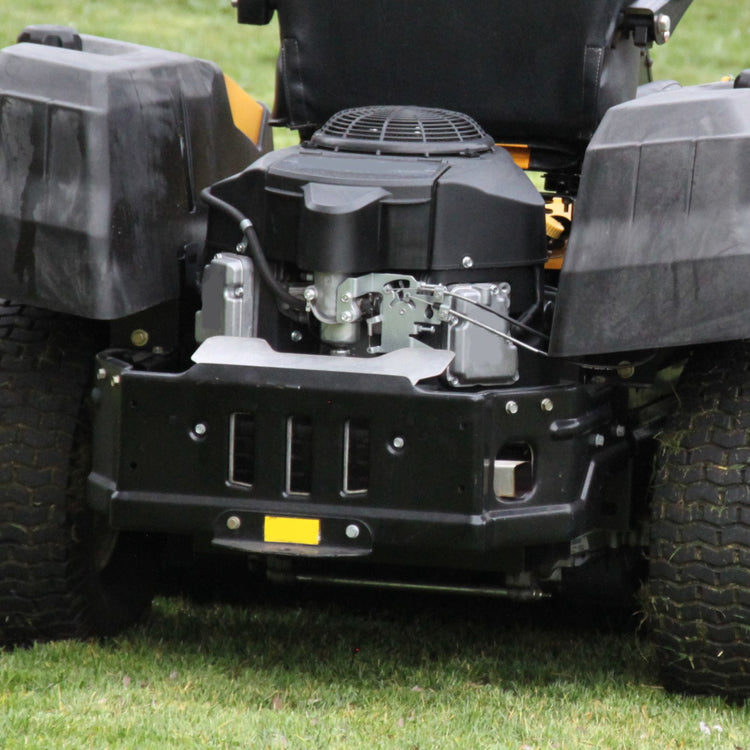As a landscaper or homeowner who uses outdoor power equipment, you may have heard the term "choke cable" before. But do you know what it is and how it works?
What is a choke cable?
A choke cable is a mechanism that is commonly found on lawn mowers and other small engines. It is responsible for regulating the flow of air and fuel into the engine, allowing it to start properly. When the engine is cold, it requires a richer fuel mixture to start, which is where the choke cable comes in.
A choke cable kit often includes a flexible cable, a choke knob, and other necessary hardware for installation. The knob is a user-friendly feature that allows operators to easily adjust the choke as needed, ensuring smooth engine startup and operation. Furthermore, some choke cable kits incorporate a brake mechanism that holds the cable in position once the desired choke setting is reached. This brake mechanism helps maintain the choke setting during equipment use, preventing unintentional changes and ensuring consistent performance of the outdoor power equipment.
When the choke is engaged, the cable restricts the flow of air into the engine, creating a richer fuel-to-air ratio. This makes it easier for the engine to start, as it requires less air to ignite the fuel. Once the engine is running smoothly, the choke can be disengaged, allowing for a normal fuel-to-air ratio.
It's important to note that leaving the choke engaged for too long can cause damage to the engine and decrease its lifespan. It's crucial to only use the choke when starting a cold engine and disengage it as soon as the engine starts running smoothly.
If you're experiencing difficulty starting your lawn mower or other outdoor power equipment, it may be due to a faulty choke cable. It's important to regularly maintain and inspect your equipment to ensure it's running properly.
Choke cable vs. throttle cable: What's the difference?
A choke cable controls the amount of air entering the carburetor, while a throttle cable controls the amount of fuel and air mixture entering the engine. Both cables are essential for optimal engine performance, but they serve different functions.
How do I install a choke cable?
Installing a choke cable kit is a simple process that can be done in a few easy steps. The choke cable is an important component of your lawn mower, providing an easy way to control the choke when starting the engine. Here's a step-by-step guide on how to install a choke cable:
Step 1: Remove Old Cable
The first step is to remove the old choke cable if there is one. To do this, locate the cable at the carburetor and trace it back to the handle. Once you've found the cable, detach it from the carburetor and remove it from the handle.
Step 2: Install New Cable
Next, take the new choke cable and insert it into the hole on the carburetor. Make sure the cable is seated securely in the hole. Then, route the cable back to the handle and insert it into the hole. Attach the cable to the handle using the provided screw or locking mechanism.
Step 3: Adjust the Cable
Once you've installed the new choke cable, adjust it's length so that it's taut but not too tight. You want to be able to easily control the choke without having to pull too hard on the cable. Test the cable by starting the engine and checking to see if the choke is opening and closing properly.
Step 4: Secure the Cable
Finally, secure the cable to prevent it from coming loose while you're using your lawn mower. Depending on the model of your mower, you may need to use a cable tie or another type of fastener to keep the cable in place. Make sure the cable is positioned in a way that won't interfere with other parts of the mower or get caught on anything while in use.
How do I adjust a choke cable?
As a landscaper or homeowner, you may encounter issues with your lawn mower or other outdoor power equipment that require adjusting the choke cable. The choke is responsible for regulating the air and fuel mixture during startup, ensuring that the engine runs smoothly until it reaches the appropriate operating temperature. If the choke cable is not adjusted correctly, it could result in poor performance, increased fuel consumption, and even damage to the engine.
To adjust a choke cable, follow these simple steps:
- Locate the choke cable on your equipment. It is typically located near the carburetor or on the engine block.
- Identify the adjustment mechanism. It could be a screw, a locking nut or a clamp.
- Loosen the mechanism with a wrench or pliers, depending on the type of mechanism.
- Adjust the choke cable until it is tight, but not too tight. You should be able to move the choke lever from the “off” position to the “on” position with a little effort.
- Tighten the adjustment mechanism. Be careful not to tighten it too much or it could damage the cable.
- Test the choke by starting the engine. If it starts smoothly and without hesitation, you have successfully adjusted the choke cable.
In conclusion, adjusting a choke cable is a simple procedure that can greatly improve the performance of your outdoor power equipment. It is important to do it correctly to avoid damaging the engine or reducing its lifespan. If you are not confident in your abilities to adjust the choke cable, it is recommended to seek the assistance of a professional who has experience in performing such tasks. Maintaining your lawn mower and other outdoor power equipment is crucial to ensuring that they continue to operate efficiently and effectively.
How often should I replace a choke cable?
The frequency of replacing your choke cable depends on several factors, including the age and usage of your equipment, environmental conditions, and frequency of maintenance. Generally, choke cables can last for several years if they are well-maintained and kept in good condition. However, if your choke cable is showing signs of wear, such as fraying, rusting, or if it becomes stiff, it's time to replace it.
It's also important to note that a faulty choke cable can cause several issues with your equipment, including difficulty starting or running, engine flooding, and decreased fuel efficiency. Therefore, it's crucial to inspect your choke cable regularly and replace it as needed to avoid any complications.
What are the signs of a faulty choke cable?
As a professional landscaper or homeowner who regularly uses lawn mowers and other outdoor power equipment, it is essential to be aware of the signs of a faulty choke cable. A choke cable is an essential component of a small engine, as it regulates the amount of air and fuel that enters the engine during the startup process.
Here are some signs that your choke cable may be faulty:
- Difficulty starting the engine: If your engine is having difficulty starting, it could be a sign that your choke cable is not working correctly. A properly functioning choke cable will help to regulate the air and fuel mixture, making it easier for the engine to start.
- Engine stalling: If your engine starts but then stalls shortly after, it could be a sign of a faulty choke cable. A choke cable that is not working correctly can cause the engine to receive too much or too little fuel, resulting in a stalled engine.
- Poor engine performance: A faulty choke cable can also result in poor engine performance. The engine may struggle to run smoothly, or it may not reach the full power output that it should.
- The choke lever doesn't move smoothly: If you notice that the choke lever isn't moving smoothly, it could be a sign of a faulty choke cable. A cable that is frayed or damaged can cause the lever to stick, making it difficult to regulate the air and fuel mixture.
Find the perfect choke cable at My Parts Store:
At My Parts Store, we carry a wide range of choke cables, universal choke cables, and more. Whether you need a lawn mower choke cable, zero turn choke cable, or tractor choke cable, we have the right option for you. Don't forget to also explore our selection of throttle cables to ensure your outdoor power equipment runs smoothly and efficiently. Visit our website for finding the perfect choke cable for your needs!



